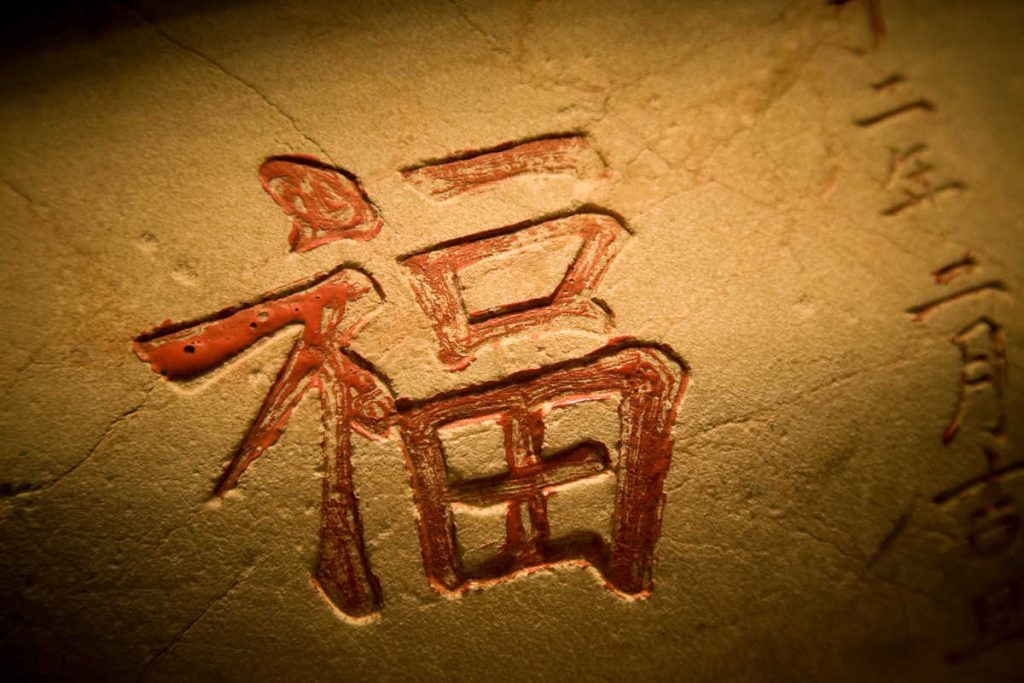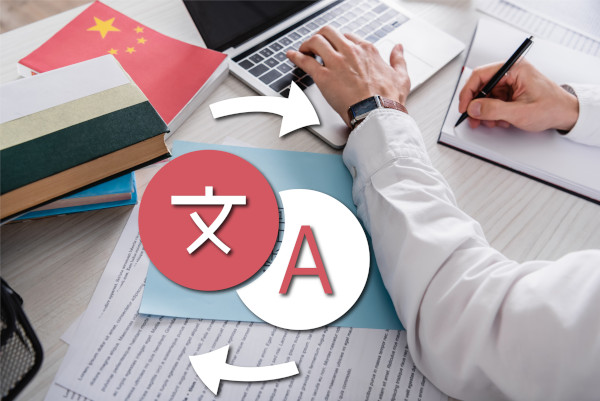
Chinese characters, or Hanzi (汉字), are an intriguing component of the Chinese language that plays an important part in its written form. Chinese characters, unlike alphabetic scripts, are ideograms, which means they represent ideas or concepts instead of sounds. So, people who speak different Chinese dialects can all read the same character. This makes it a unifying force in China.
This article will talk about where Chinese characters came from and how they changed over time. It will also talk about the differences between traditional and simplified characters, how many characters are used in Chinese, how to translate and write Chinese characters on a computer, and many other important points.
Origin and Evolution of Chinese Characters
The origins of Chinese characters may be found in the Shang dynasty, which ruled from 1600 to 1046 BCE. Pictographs, or basic representations of things or thoughts, were the first Chinese characters. For example, the character for “sun” appeared as a circle with a dot in the center, and the character for “tree” appeared as a depiction of a tree.
Over time, these pictographs changed into more abstract symbols that represented ideas instead of real things. By the time of the Han period (206 BCE–220 CE), the number of Chinese characters had grown to about 3,000.
During the Tang dynasty (618–907 CE), Chinese calligraphy achieved unprecedented artistic heights. Calligraphers utilized many styles and techniques to produce beautiful and detailed characters that were regarded as individual works of art.
As time went on, these pictographs became more abstract, and new symbols were made to represent more complex ideas. As a result, hundreds of characters were created, each with its own distinct meaning.
Many Chinese characters nowadays are made up of several components, each of which has a different meaning. There are more than 100,000 Chinese characters. From street signs and restaurants to literature and scientific papers, these characters are employed to write everything.
How Many Characters Are There in Chinese Language?
We’ve already said that there are more than 100,000 Chinese characters. Actually, the biggest number ever recorded in a Chinese dictionary was 106,230 in the Taiwan Ministry of Education’s 2004 Dictionary of Chinese Character Variants (異體字字典, Yìtǐzì zìdiǎn). Nonetheless, only roughly 20,000 characters are commonly used nowadays, with most individuals requiring just around 3,500 to 4,000 characters to be regarded as literate.
But even if you learn all these Chinese characters, you still won’t be able to read everything written in Chinese. Some characters are only used in certain places or for certain things, while others are hard to find or no longer used.
What Is the Difference Between Chinese Traditional and Chinese Simplified?
Chinese characters are classified into two types: traditional and simplified. Traditional characters are the original way that Chinese characters were written, and they are still used in Taiwan, Hong Kong, Macau, and many other places where Chinese people live outside of China. Simplified characters are easier to read and write because they have fewer strokes, but traditional characters are still regarded as being more elegant and artistic.
The process of making things easier to understand started in the 1950s, when the Chinese government started a campaign to get more people to read and write. They compiled a list of commonly used characters and reduced the number of strokes to simplify them. For instance, the simplified character (马) for “horse” contains only 3 strokes compared to the traditional character’s 17 strokes (馬).
Do Mandarin and Cantonese Use the Same Characters?
Indeed, the characters in Mandarin and Cantonese are the same. Nonetheless, certain characters’ pronunciations and usage may change across the two languages. The character for “good,” for example, is pronounced “hǎo” in Mandarin and “hóu” in Cantonese. Moreover, Cantonese contains a distinct set of characters not found in Mandarin.
Not only do Mandarin and Cantonese use the same characters, but so do many other dialects of Chinese. Each dialect, however, may have its own pronunciation, grammar, and vocabulary.
Related reading: Chinese as A Second Language – Is Learning Chinese Worth It?– Opens in new tab
What Countries Use Traditional Chinese Characters?
Let’s take a look at the places where traditional Chinese characters are used.
The main place where traditional Chinese characters are used is Taiwan. Taiwan has retained traditional Chinese culture, and the government encourages the usage of traditional Chinese characters. Traditional characters are used in Taiwan’s governmental papers, street signs, and other communications.
Hong Kong and Macau are also regions where individuals still use traditional Chinese characters. Each of these locations have distinct cultural and political histories, which has influenced their ongoing usage of traditional characters. They are used in official documents, newspapers, literature, and other types of media in Hong Kong and Macau.
Furthermore, Chinese populations in countries like Australia, Canada, and the United States use traditional Chinese characters. In these places, traditional characters are often used at cultural events and other activities that highlight Chinese culture and heritage.
However, traditional Chinese characters aren’t limited to just Chinese-speaking countries. Japan and Korea also use traditional characters, which are called kanji and hanja, respectively. In these countries, traditional characters serve as part of the writing systems used in their native languages, but they have been changed to reflect the unique features of each language.
Traditional Chinese characters are gaining popularity among Chinese language learners. Many students believe that traditional characters are more beautiful and expressive than simplified ones, and they value these characters’ cultural and historical significance. Because of this, traditional characters are being used more and more in Chinese language classes and in materials for people learning Chinese all over the world.
How Do I Translate Chinese Characters to English?
If you’re not fluent in Chinese, translating Chinese characters into English might be a difficult task. But with the right tools and help, it is possible to translate Chinese characters into English correctly.
Online translation tools like Google Translate and Bing Translate are popular for translating Chinese characters into English. These applications translate Chinese text into English instantly. While these tools are useful for basic translations, they are not always exact and may miss nuances in the original language.
Most of the time, the results are more accurate when a professional translator or translation service is used. Professional translators know how to translate content from one language to another so that it makes sense and says what was meant.
Professional translation services are one way to translate from Chinese to English, but there are also software tools that can help. These apps use complex algorithms to figure out the structure and meaning of Chinese text and then translate it accurately, taking into account the subtleties of the language.
A Chinese-English dictionary is also a good way to translate Chinese characters into English. There are several online dictionaries, as well as printed version dictionaries available in bookstores and online stores. These dictionaries include not only definitions for each character in English but also examples of its application in Chinese sentences.
While translating, remember that Chinese is a tonal language and that tone can modify the meaning of a word or phrase. To figure out what words and phrases mean, it often helps to listen to recordings of native Mandarin speakers saying them.
Related reading: The Most Commonly Asked Questions About the Chinese Language – Opens in new tab

How Do I Change My Keyboard to Chinese?
Whether you are studying Chinese or need to type in Chinese for professional or personal reasons, changing your keyboard to Chinese might be a good step. Here are some tips on how to change your keyboard to Chinese on different devices.
On Microsoft Windows:
- Click “Start” and then “Settings.” to get started.
- Click on “Time & Language,” and then select “Language.”
- Scroll down and click on “Add a language.”
- Choose “Chinese (Simplified)” or “Chinese (Traditional)” and then click “Set as default”, if you want to make this language your default input language.
- Next to the language you just selected, click “Options” and then “Add a keyboard.”
- Choose a Chinese keyboard, such as “Microsoft Pinyin” or “Microsoft New Phonetic,” and then click “Add.”
By pressing the Windows key and the space bar, you can switch between your keyboard’s different languages.
On Mac:
- Click System Preferences from the Apple menu.
- Click on “Keyboard,” then the “Input Sources” tab.
- Click the “+” button and choose “Chinese (Simplified)” or “Chinese (Traditional).”
- Choose the Chinese keyboard you wish to use, such as “Pinyin – Simplified” or “Zhuyin – Traditional,” and then click “Add.”
You can switch between the different languages by clicking on the flag icon in the menu bar and selecting the language you want to use.

On iOS:
- Choose “Settings” from the “General.” menu.
- Scroll down and click “Keyboard.”
- Click “Keyboards,” then click “Add New Keyboard.”
- Choose either “Chinese (Simplified)” or “Chinese (Traditional).”
- Choose your preferred Chinese keyboard, such as “Pinyin” or “Wubihua,” and then click “Add.”
You may switch between keyboard languages by clicking the globe icon on your keyboard.
On the Android platform:
- Go to “Settings” and then select “System.”
- Go down and tap “Languages & input.”
- Tap “Virtual keyboard,” then choose “Gboard” or another keyboard app you like.
- Tap “Languages” and then “Add keyboard.”
- Choose “Chinese (Simplified)” or “Chinese (Traditional).”
- Choose a Chinese keyboard, such as “Pinyin” or “Wubi Input Method,” and then click “Add.”
By touching the globe icon on your keyboard, you may switch between your different keyboard languages.
Related reading: The Biggest Challenges in learning Chinese for English speakers–Opens in new tab
End Words
To sum up, the Chinese writing system is both an intriguing and challenging part of the Chinese language. They have been around for a long time and have changed over thousands of years, showing how Chinese culture and traditions have changed.
This article has talked about where Chinese characters came from, how they changed over time, how traditional and simplified characters are different, and how they are used in different Chinese dialects. We also looked at some practical ways to translate Chinese characters into English and set the keyboard on different devices to Chinese.
Even though it is hard, it may be worth the time and effort to learn Chinese characters. We can better understand the history and meaning of these characters and the Chinese language and culture as a whole. Whether you are learning Chinese or just want to know more about it, the world of Chinese characters is waiting to be explored.
Stay in Touch
 Join our newsletter by using the forms on this website or click here!
Join our newsletter by using the forms on this website or click here! Follow us on Google News
Follow us on Google News Follow us on Facebook
Follow us on Facebook
Feature Image from Depositphotos





